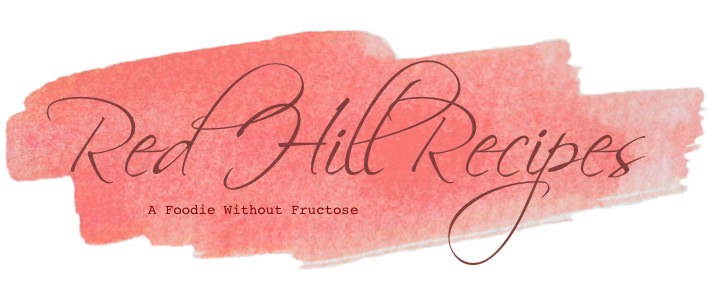It is hot today! And massively humid! I can happily take either one without the other, but both together equals a miserable me. Ugh. (Don’t worry... that’s my whinge finished.)
This kind of day just calls for a cold drink. Once upon a time I would have said ‘Coke!' (which is full of sugar). More recently it would have been ‘Coke Zero!’ (which is full of rubbish). But my healthy, fructose free options are limited. Water is kind of boring. I really enjoy cold sparkling water, maybe with a bit of lime, nowadays, but instead of that, I decided on something different today. (No, I don’t normally deliberate over my drink choices this much...)
I boiled some water, poured it into a little jug and added some delicious smelling tea leaves. And while that was cooling, added a little rice malt syrup and stevia powder (not to make it really sweet, just a touch). There was only one sad, somewhat less than fresh little lemon and a slightly less sad lime in the fruit bowl, but they are still perfect for this kind of thing (plump fresh ones would have been nicer to photograph, mind you). I dropped in a few slices of lemon and lime to add their special zippy flavours (and look pretty).


I confess I was getting a bit impatient (how LONG does it take for boiling water to cool?!). So to hurry the process along a bit, I topped up the jug with way more ice cubes than usual. (I freely admit I prefer instant gratification, and the process of waiting for a hot drink to become a cool one is trying.) Not surprisingly, I wished I had thought of doing the whole process yesterday evening, so it was ready in the fridge. I’ll do that next time. Maybe.
But anyway, I now have my second glass of iced tea in my hand. And I am trying to decide whether to drink it, or keep holding the wonderfully cold side of the glass against my cheek...
Iced Tea
Ingredients
Boiling water
Tea leaves of your choice (or use tea bags if you prefer - I just like to see the leaves prettily floating about, I use teabags if I make it for the kids)
Rice malt syrup or dextrose
Fresh lemon and lime slices (optional)
My Way: I used a 750ml jug, 2 Tbsp red emperor tea leaves, 3 Tbsp rice malt syrup, and a big pinch of stevia powder. But you should adjust the amounts to suit your own tastebuds.
Kid Friendly Version (more 'Lipton's-ish): 750 ml boiling water, 2 decaf teabags, 1/4 cup dextrose (and even with decaf teabags, I make the tea pretty weak for the kids)
- Strong tea, weak tea, sweet tea... There is no right or wrong way to make this, just do it your way. Lots of people like their iced tea sweeter than I do (more like the stuff you buy), so load it up with rice malt syrup or dextrose, if that's you!
Kid Friendly Version (more 'Lipton's-ish): 750 ml boiling water, 2 decaf teabags, 1/4 cup dextrose (and even with decaf teabags, I make the tea pretty weak for the kids)
- Strong tea, weak tea, sweet tea... There is no right or wrong way to make this, just do it your way. Lots of people like their iced tea sweeter than I do (more like the stuff you buy), so load it up with rice malt syrup or dextrose, if that's you!
Directions
- Boil water and pour into jug with tea leaves.
- Add rice malt syrup (or dextrose) and stevia to taste
- Add lemon and lime if using
- Wait f-o-r-e-v-e-r until it’s cool or add heaps of ice












































